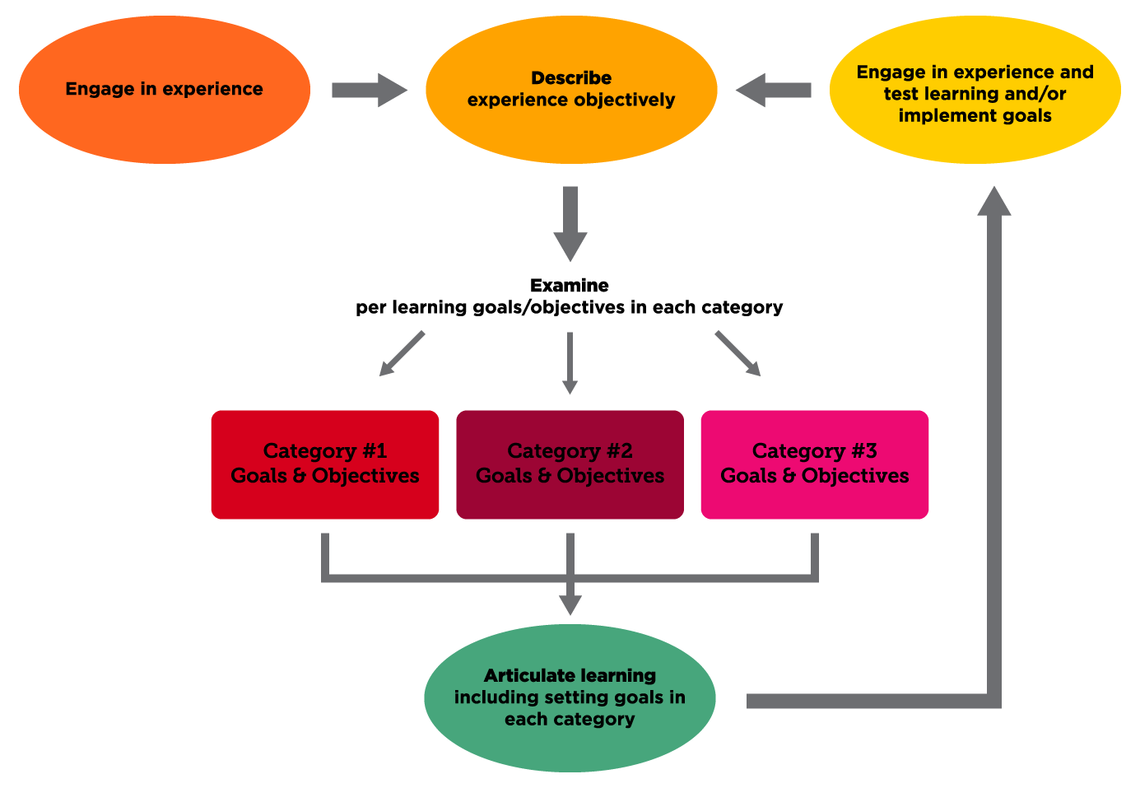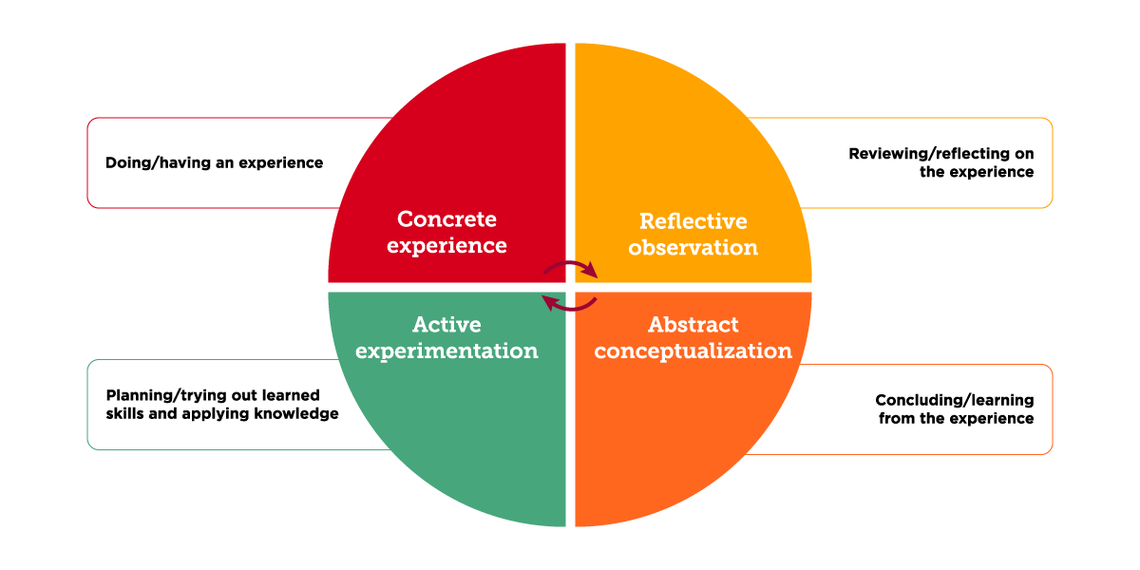The design of critical reflection assignments should be intentional and aligned with desired learning outcomes. We invite you below to consider two models for designing critical reflection, the DEAL model, and Kolb’s Experiential Learning Cycle, and to articulate the desired learning outcomes informing your use of critical reflection.
Examples of experiential learning activities
Students draw upon the knowledge, skills, and abilities they developed across a degree program in a senior culminating experience to demonstrate the breadth of their learning. Capstones may engage students with external organizations or industry partners.
Students put learning into action by applying theory to real-world or simulated scenarios with pre-set qualities and conditions.
Students connect disciplinary learning and theoretical concepts while developing skills through activities designed with or for a community organization to achieve mutually beneficial outcomes.
Students engage with an inquiry project or set of coordinated, research-based assignments to build their scholarly skills and self-efficacy within a course-setting for academic credit.
Students produce, manage, curate or participate in a creative undertaking such as drama, dance, or musical performance or an exhibit of photograph, studio art, design, or mixed-media for a live or virtual audience to demonstrate their artistic repertoire and sensibilities.
Students engage in embodied or hands-on learning or place-based experience such as data collection or analysis in a field location, sometimes with guest experts or Elders as guides in addition to the instructor.
Pitch competitions: Students prepare and deliver a compelling idea for a product or solution to a panel of expert judges as part of an academic course or co-curricular activity.
Hackathons: Students collaborate in teams to develop solutions to a real-life problem via an intense, time-limited challenge often in a competition that ranks the outputs.
Students engage in hands-on, structured scenarios or activities that are typically case-based or designed to mimic possible or actual events with a range of technological tools and/or human actors. These scenarios may include one or more of the following: human simulation, high-fidelity simulations, virtual simulation, virtual labs, augmented reality, virtual reality, game simulation, or standardized patient actors.
Students learn and perform duties under the supervision of a practicing professional in a workplace setting. In some cases, such placements are required for professional certification.
Students participate in a discipline-specific, supervised, and structured work term. An internship may be paid or unpaid but is awarded academic credit. The length of internship can vary by program.
Students engage in international and cross-cultural academic experiences such as exchanges, group study programs, study or research assistantships abroad, and collaborative virtual or online intercultural learning, often in conjunction with programs at partner universities or with research placements around the world.
Students apply and develop complex problem-solving and teamwork skills by engaging with a real-world challenge in a course setting often using a computerized/digital or physical model, typically with oversight and mentorship from an instructor and/or practicing professional.
Models for designing critical reflection
There are numerous evidence-based models that can guide the design of critical reflection assignments. Below we outline Ash and Clayton’s (2009) DEAL model and Kolb’s (1984) Experiential Learning Cycle.
The DEAL Model
The DEAL model developed by Ash and Clayton (2009) provides an evidence-based model to guide the design of critical reflection assignments by segmenting the structure of a critical reflection into three sequential parts: Describe, Examine, and Articulate Learning.
Description the experience in an objective and detailed manner.
Examination of experiences in light of specific learning goals or objectives.
Articulation of learning, including goals for future action that can then be taken forward into the next experience for improved practice and further refinement of learning.

Schematic Overview of the DEAL Model for Critical Reflection (Ash and Clayton, 2009).
The Experiential Learning Cycle
Kolb’s (1984) Experiential Learning Cycle provides a cyclical model that highlights the continuous and iterative nature of critical reflection. The four stages of the Experiential Learning Cycle are Do, Review, Conclude, and Redo.
Doing or having an experience. This stage speaks to the actual experience students learn from and reflect on.
Reviewing or reflecting on the experience. This stage is for reflective observation.
Concluding learning outcomes or learning from the experience. This stage is about abstract conceptualization where students articulate the relationship between broader ideas, concepts, and ideals to their experience.
Planning or trying out learned skills and applying one’s learned knowledge. This stage involves students actively experimenting and practicing their new skills and knowledges. This stage leads to a new concrete experience.

Additional resources
Lesson checklist
-
Reflect on what experiential learning opportunities are part of your instructional practice
-
Review DEAL and Experiential Learning Cycle models of reflection
-
Articulate your desired learning outcomes for critical reflection
-
Check out additional resource
References
Ash, S. L., & Clayton, P. H. (2009). Generating, deepening, and documenting learning: The power of critical reflection in applied learning. Journal of Applied Learning in Higher Education, 1(1), 25-48.
Kolb, D. A. (1984). Experiential learning: Experience as the source of learning and development (Vol. 1). Englewood Cliffs, NJ: Prentice-Hall
McRae, N. (2018) The P.E.A.R. Framework for experiential learning: Institutional level [PowerPoint slides, PDF file]. Retrieved from https://uwaterloo.ca/centre-for-teaching-excellence/sites/default/files/uploads/files/waterloo_exl_norah_mcrae_final.pdf




